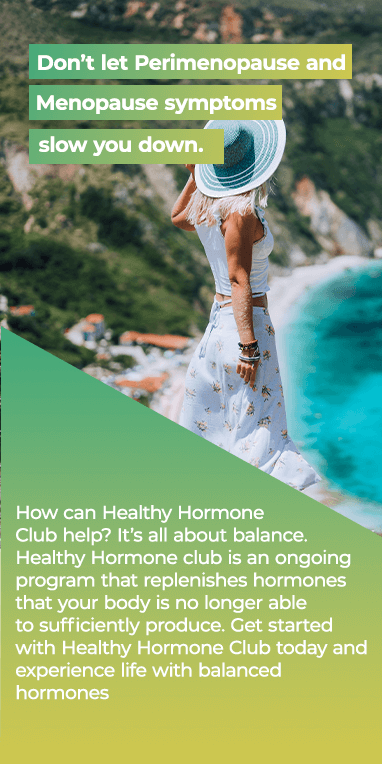

Naturopathic Solutions for Chronic Pain
Natural Solutions for Chronic Pain
An evolving understanding of pain is leading us to treatments that are safer — and more effective — than opioids.
Chronic pain has become an epidemic. It is estimated that over 100 million Americans suffer from chronic pain, it is hard to even imagine what that figure would be world-wide. Let’s just simply say that there are a lot of people hurting for a very long time.
Whether it’s a result of a degenerative disease, a chronic health condition, accident, injury, medical complication or other reason, chronic pain can make everyday life a struggle.
Conventional medicine has a limited toolbox of pain reduction and management strategies ranging from opioids, to muscle relaxers, antidepressants, anti-depressants, to physical therapy, and surgery. Unfortunately, for many, these interventions do not provide the degree of relief they are seeking and can often come with side effects that can make life even worse.
Maybe you or someone close to you has been down this road. It can be disheartening when nothing seems to work. The truth is that healing does not come in a pill.
Real relief requires more than simply dulling the pain or numbing the individual. In Naturopathic medicine, we seek to treat the individual on a holistic level, rather than put a band-aid on the problem. This philosophy holds true in our approach to pain relief and management.
Effective management of chronic pain nearly always requires a multifaceted approach, one that takes into account physical, social, and emotional factors.
With a more thorough understanding of the root causes of chronic pain and a growing number of therapies and techniques to address them, I believe that pain can be not only managed but overcome, and we have seen this firsthand in our clients.
The Purpose of Pain
Pain serves an important purpose: It communicates what is happening in the body. This is necessary for our survival. If you place your hand on a hot stove, the immediate feedback will prompt you to quickly pull your hand away before you skin is badly burned. Day by day, it alerts us to injury and illness and, like a guardrail, dissuades us from actions that lead to even more painful outcomes.
Chronic pain is fundamentally different, and less useful. Acute pain results from a specific impact or event (such as a cut or a fall) and typically dissipates in less than six weeks. Subacute pain can last up to 12 weeks. Chronic pain lasts for more than three months.
Studies have looked at the areas of the brain that light up with these different kinds of pain, and show that with acute and subacute pain, we see activity in areas known as the pain matrix.
With chronic pain there is a shifting of activation to the mood centers, where anxiety and depression come from.
However, as the brain signature of chronic pain shifts entirely to the emotion centers, patients report the same physical discomfort they felt in the acute stage. It is an unfortunate fact that in many cases, chronic pain can continue long after the injury has been healed. Chronic pain no longer serves as a protective alert of a danger or dysfunction, it becomes the dysfunction.
Pain Brain
Chronic pain manifests in structural changes to the brain. These include the actual loss of gray matter (which can lead to cloudy thinking and poor decision-making) and disruption in the hippocampus (which regulates learning and memory).
These changes create neural pathways, and their repeated activation results in a feedback loop of physical pain — and negative thoughts.
People feel more pain, then they get even more depressed, and the depression makes the pain worse. It becomes a vicious cycle.
Opioids are Not the Answer
In the early-’90s, The American Medical Association (AMA) made pain the fifth vital sign. Physicians were required to ask patients about their pain and to give opioids for strong pain.
By the late ’90s, doctors were prescribing opioids for a wide range of chronic-pain conditions, including arthritis, herniated discs, fibromyalgia, and more. By 2012, over 259 million opioid prescriptions were written — enough to supply every American adult.
Opioids work by mimicking a pain-reducing neurotransmitter the body produces naturally. The drug binds to opioid receptors throughout the body, blocking pain signals sent to the brain.
The downside is that long-term use of opioids diminishes the body’s ability to produce its own pain-suppressing neurotransmitters. They affect how a person functions on all levels, and because of that these drugs are extremely addictive.
Their long-term use can cause increased suffering and sensitivity over time. Ironically, many chronic opioid users actually experience a heightened sensitivity to pain.
In recent years, the opioid crisis has gotten a lot of media attention and physicians are less likely to prescribe these drugs as freely. This puts many in desperate need of real pain reduction solutions.
It Starts with the Brain
Chronic pain is a complex problem. There is no magic bullet or single solution. Researchers increasingly understand it as a psychosocial holistic condition in which emotions, thought patterns, and beliefs play as much of a role as physical factors.
This is why the most effective pain-rehabilitation programs now typically employ a wide variety of approaches that address the root causes of chronic pain — physical, psychological, emotional, and spiritual.
The notion that the mind plays a role in chronic pain can be hard for some to hear. Especially those who have been challenged by loved ones and doctors that suspect they are over-dramatizing or exaggerating their discomfort.
It is vital to recognize that chronic pain is real pain. At the same time, understanding that the root of the pain lies as much in the brain as in the body. This is good news, because the brain’s inherent plasticity means that it can change.
The multidisciplinary approach is a lot more work than simply popping opioids, but it’s a better long-term strategy. Consider including one or more of the modalities and tools below into your personal pain management practice.
Natural Solutions for Chronic Pain
Acupuncture
Because its potential for pain relief is so great, acupuncture is sometimes used as anesthesia before surgeries in some parts of the world. It is ideal for pain resulting from structural issues, including arthritis, head and neck aches, and back pain. Acupuncture is a form of energy medicine and can be a great compliment to conventional or alternative care.
Arnica
A homeopathic pain remedy, Arnica montana has been used as an analgesic for bruising, swelling, and pain for centuries. Available over the counter in both tablet and topical form, it’s been shown to be as effective as ibuprofen in relieving pain in osteoarthritis sufferers, with far fewer long-term side effects.
Cannabidiol (CBD) Oil
CBD is derived from cannabis, but unlike THC, the psychoactive compound in marijuana, CBD doesn’t result in a high. CBD may reduce inflammation, calm anxiety, and relieve pain by interacting with the brain’s serotonin and vanilloid receptors, which affect mood and pain perception. CBD is available in most states in pill and oil form; it can be purchased online.
Mind-Body Modalities
Biofeedback, hypnosis, yoga, and mindfulness-based pain management (known as MBPM) all encourage relaxation and reduce the emotional reactivity that increases the experience of pain:
Biofeedback helps participants become more aware of subconscious bodily reactions, with the goal of gaining greater control over them.
Hypnosis (including self-hypnosis) has been shown to provide significant pain reduction in chronic-pain patients, along with improved sleep, reduced anxiety, and improved quality of life.
Yoga reduces pain and improves functioning in fibromyalgia sufferers thanks to its focus on tying breath to movement and calming the mind.
Mindfulness meditation can produce stronger results than morphine, reducing pain levels by 40 to 60 percent, a clinical trial suggests. For a simple, yet effective tool to help you master mediation in as little as 15 days, check out Ziva Online, the meditation tool I use myself and recommend to my clients.
Massage and Bodywork
Massage increases the flow of blood and oxygen to soft tissues, helps relax tense muscles, can reduce nerve compression, and calms activation of pain-triggering and inflammatory cytokines. One study found that massage can even be helpful in acute-care settings, where surgical patients reported significant pain reduction following a 30-minute session.
Talk, Art, and Movement Therapy
Releasing pent-up thoughts and emotions through art, writing, and movement appears to contribute to the healing process. These modalities can break the negative-feedback loop of emotional and physical pain and lead to greater acceptance, peace, and well-being.
- Posted
- in Natural Medicine
- By Dr. Michelle






4 Comments
Thanks for sharing. I read many of your blog posts, cool, your blog is very good. https://www.binance.com/ru/join?ref=PORL8W0Z
How to track the location of the other person’s phone without their knowledge? You will be able to track and monitor text messages, phone calls, location history and much more. Free Remote Tracking and Recording of Husband’s Phone Cell Phone Spy. Best Apps to Download for Free to Spy on Another Phone.
Mobile Phone Monitoring App – hidden tracking app that secretly records location, SMS, call audio, WhatsApp, Facebook, Viber, camera, internet activity. Monitor everything that happens in mobile phone, and track phone anytime, anywhere. https://www.mycellspy.com/
Wow, superb weblog format! How lengthy have you ever been blogging for?
you made running a blog glance easy. The whole look of
your website is magnificent, as well as the content material!
You can see similar here dobry sklep